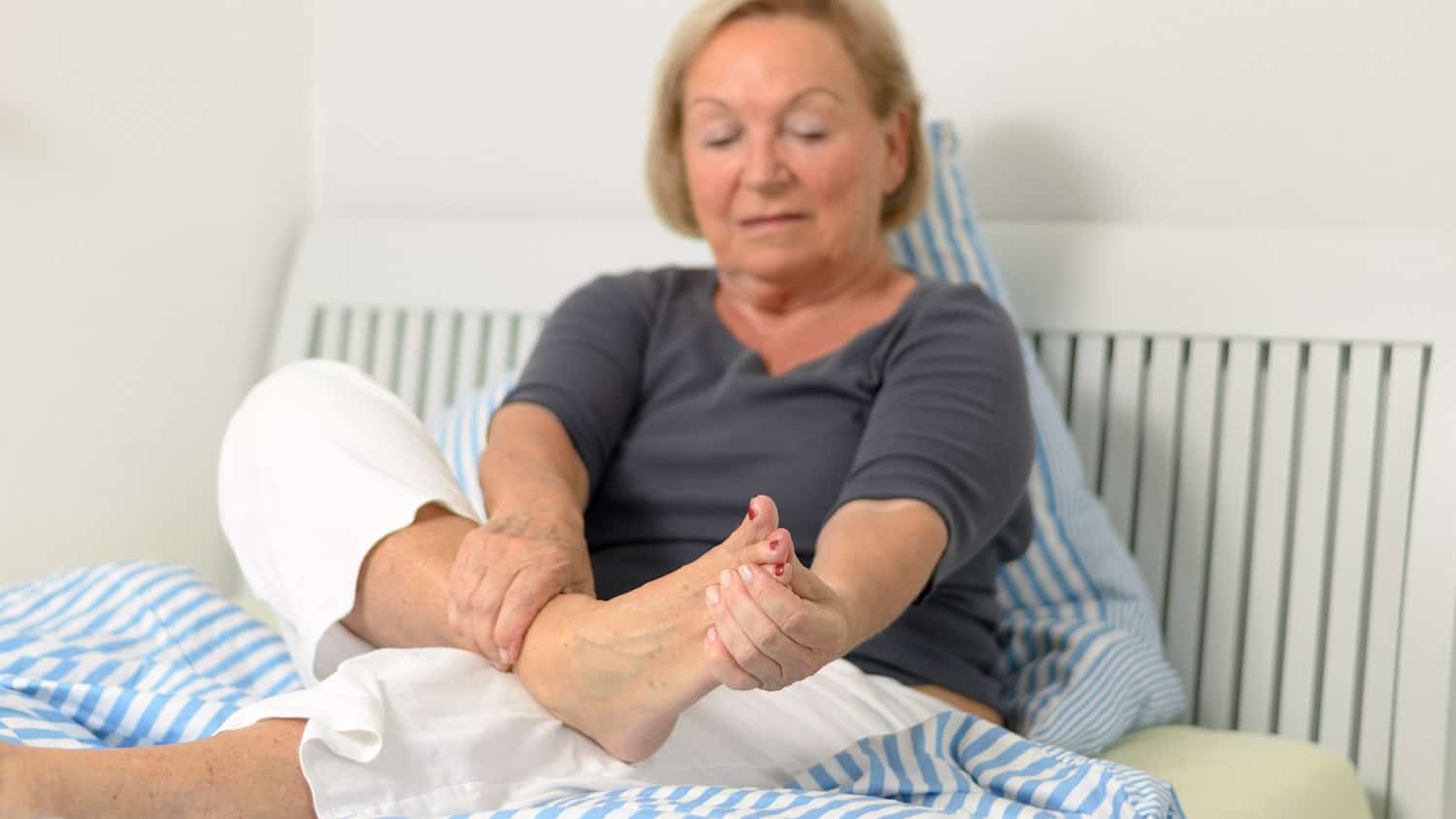
Beauty Starts at Your Feet! 4 Ways to Care for Your Feet After 60 (And 6 Painful Conditions to Avoid)
For women, the question “Do I look good?” points at appearance, body shape, face, and hair. We use makeup and skin care to hide blemishes, change our facial color, accentuate the eyes and mouth.
Bras and bodysuits help with our contours. We curl, uncurl, dye, bleach, streak, cut, and add pieces to our hair to enhance our looks. Advertising show us a plethora of products and possibilities for becoming desirable.
Have you ever seen an ad that touts beauty through foot care? You’d have to travel to a society where women wear burkas to find the foot the desirable symbol of beauty.
As a walker and former massage therapist and bodyworker, I prize my feet for health and beauty and for making my walking adventures possible.
The bottoms of your feet have 7000 nerve endings corresponding to every organ and system in your body. Stimulating and massaging these reflex or pressure points improves the health of your organs, your circulation and open energy pathways that may be blocked or congested.
Yes, healthy feet are a pathway to a healthy body.
Your beauty depends on good circulation, functioning organs, and a working metabolism to give you a healthy “glow,” sparkling eyes, shiny hair, and a shapely body.
If you’re thinking health and beauty, practice foot care! Here are a few tips.
Exercise Your Feet
Even if it’s snowing where you are, let your thoughts turn to spring time and walking in nature. To walk you need healthy feet which makes the whole experience a pleasure. Walking, on the other hand, creates healthy feet.
As we age, our feet need daily exercises to keep them flexible, to stretch and strengthen the muscles and ligaments that carry you through your day.
Stand on your toes, raise your toes, individually, if you can; wiggle your feet, make ankle circles, pull your feet downward and upward with your hands. You can do these exercises standing or seated whenever you think of it.
Practice walking barefoot to stimulate the nerve endings and pressure points. Walk barefoot in grass, sand, and dirt and toughen your feet. In winter, I walk indoors in flexible down booties.
Practice Foot Care
There are many ways to care for your feet. Here are my suggestions:
Daily Foot Care
Check and wash your feet daily, dry thoroughly, especially between the toes, and massage the feet while washing and drying to stimulate circulation and encourage flexibility.
Weekly Foot Care
Give your feet a soak in warm water with Epsom salt; rinse with cold water. This is both relaxing for your feet (and you!) and stimulating for your circulation. Scrub and smooth any calluses with pumice stone; trim your nails, and apply foot lotion. Avoid walking on just moisturized slippery feet!
Shoe Wear
Wear shoes that fit comfortably and give your toes room to spread. Generally, feet become larger as we age.
So, while the foot completes most of its growth by age 18 or 20, its size might increase as the arch collapses in later life, which results in a wider, longer foot. Many later-in-life foot problems result from tight and high-heeled footwear earlier in life.
Socks
Choose your socks carefully. They should be loose but not wrinkled. Avoid socks, stockings, or pantyhose that are too tight and may reduce circulation.
Seamless socks are a good idea for foot protection and can avoid irritation, blisters, or other skin injuries. They assure a smooth fit, eliminating pressure points that hinder circulation.
Prevent Common Foot Problems
As we age, our feet often experience problems that can cause us pain or annoyance. These include:
Ingrown Toenails
To prevent ingrown toenails cut the corners of your toenails straight.
Corns and Calluses
Two very common problems are corns and calluses. They result from too much pressure, and the thinning of the foot pads as we age.
Both of these may have to do with the weight your feet have to carry, or with the shoes you’ve been wearing all your life. This issue is difficult to fix, but you can at least wear big enough shoes and reduce the hard calluses and corns by giving your feet a regular soak.
Athlete’s Foot
Athlete’s foot can be prevented by not going barefoot in the gym and drying your feet meticulously, especially between the toes.
Dry Cracking Skin
Moisturize your feet daily before you go to bed so the moisturizer can soak in. This will prevent the development of dry skin on your feet.
Painful Bunions
Want to prevent bunions? Watch this YouTube video!
Plantar Fasciitis
Exercise your feet to prevent Plantar fasciitis. One way is to roll your feet over a rubber half tube to keep the arches from falling and stretch the ligaments on the bottom of your foot.
Maintain a reasonable weight; too much body-weight overworks the fascia on the bottom of the feet. You can also wear supportive shoes and if need be orthotics.
Your beauty depends on your feet! Feet that serve you and aren’t painful will put a smile on your face. Care for your feet now – spring and summer are coming!
Let’s Have a Conversation:
How often do you take care of your feet? Do you wait until your feet hurt before you take care of them? Or is your idea of caring for your feet washing them and dabbing foot powder between your toes? Do you keep buying new shoes with softer insoles to take care of your aching feet? What procedure do you follow to relax your feet and prevent deformities? Please share in the comments below!
Disclaimer: This article is not intended to provide medical advice. Please consult with your doctor to get specific medical advice for your situation.
Tags Healthy Aging







I’ve been dealing with major foot issues for over 2 years – it started with plantar fasciitis, then a torn fascia, then a stress fracture, and now neuropathy. At 68 my days of wearing cute shoes or heels are over, and I only buy orthotic shoes.With the help of Hoka shoes and custom orthotics I’m still able to do my 2 mile walks.